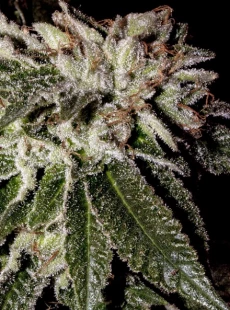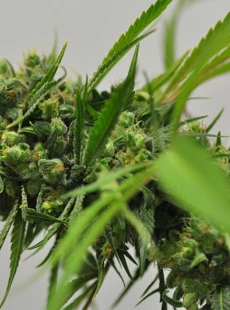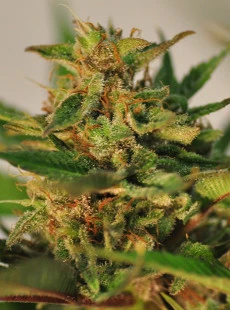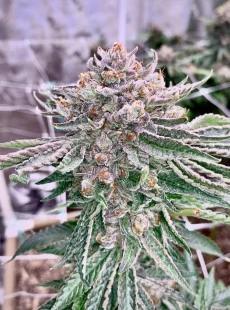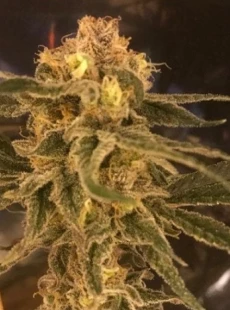Outdoor Growing
Here is a comprehensive cannabis grower's diary for both Indica and Sativa strains grown outside in soil, with step-by-step instructions and tips for novice growers.
Choosing Your Seeds
When selecting cannabis seeds, look for a reputable seed bank like Reeferman Seeds and choose strains that are well-suited for your climate. Indica strains typically have shorter flowering times and are better suited for colder climates, while Sativa strains have longer flowering times and thrive in warmer, more tropical climates. If you're growing outside, you'll want to choose strains that are specifically bred for Outdoor Growing, as certain indoor strains may not be acclimated to the outdoor environment.
Preparation
Before planting your cannabis seeds, prepare your soil. Choose a location that receives plenty of sunlight and has good drainage. Dig a hole about twice the size of the root ball of your plant and mix in some organic compost or fertilizer. Water the soil well and let it settle for a day or two before planting.
Planting Your Seeds
Plant your seeds about a quarter to a half-inch deep in the soil, with the pointed end facing up. Cover the seed with soil and lightly water it. Be sure to keep the soil moist, but not soaking wet, as over-watering can lead to problems with mold and root rot.
Germination
It can take anywhere from a few days to a week or more for your seeds to germinate. During this time, keep the soil moist and provide plenty of sunlight. You can also use a humidity dome or plastic wrap to help keep the soil moist and warm, which can speed up the germination process.
Seedling Stage
Once your seeds have sprouted and you have seedlings, you'll want to provide plenty of light and keep the soil moist. You can use a grow light or place your seedlings in a sunny window. At this stage, it's important to be careful not to over-water your plants, as they are still fragile.
Vegetative Stage
After a few weeks, your seedlings will start to grow their first set of true leaves, and they will enter the vegetative stage. At this point, you can start to fertilize your plants with a nitrogen-rich fertilizer to promote healthy growth and put them outside.
Pruning
During the vegetative stage, you can also start to prune your plants to encourage bushier growth. You can do this by pinching off the top of the plant or by using scissors to cut off the top growth. This will encourage the plant to put more energy into growing side branches, which can lead to a higher yield.
Transplanting
As your plants grow, you may need to transplant them into larger containers or directly into the ground. When transplanting, be sure to handle the roots gently and keep the soil moist.
Flowering Stage
After several weeks in the vegetative stage and leading up to the summer equinox, your plants will start to show signs of flowering. When you see this, you'll want to switch to a bloom or flowering fertilizer. During the flowering stage, you may also want to continue pruning your plants to promote good airflow and sun penetration.
Planter sizes and planting holes
The size of the planter and planting hole will depend on the size of the plant and the growing conditions. In general, larger plants will require larger planters and holes. As a general rule of thumb, the planter should be at least 5 gallons (19 liters) in size for smaller plants and up to 20 gallons (76 liters) or more for larger plants.
The planting hole should be approximately twice the size of the root ball to allow for ample space for the roots to grow. The hole should be dug deep enough to allow the plant to be planted at the same depth it was growing in its previous container.
Harvesting
When the buds are mature and ready to harvest, they will be covered in trichomes and have a strong smell. To harvest, use a sharp pair of scissors to cut off the buds and hang them upside down to dry.
Curing techniques
After the cannabis plants have been harvested, they need to be dried and cured before they are ready to be consumed. The curing process involves drying the buds slowly over a period of time in a cool, dark, and well-ventilated space.
Here are some steps for curing cannabis:
- Trim the buds from the plant and remove any excess leaves.
- Hang the buds upside down in a cool, dark, and well-ventilated space for 7-10 days.
- Once the buds are dry, place them in an airtight container and store them in a cool, dark, and dry place.
- Open the container once a day to let any excess moisture escape, and check the buds for signs of mold or other issues.
- Repeat this process for 2-4 weeks, until the buds are fully cured and ready to be consumed.
- Proper curing is essential for achieving high-quality cannabis buds that are potent and flavorful. It's important to be patient during the curing process and not rush it, as this can negatively impact the quality of the final product.
Growing Seasons
The ideal growing season for cannabis plants will vary depending on the climate and geographic location. Here is a general guide for planting and harvesting cannabis plants outside in different climates and demographics:
- California: California has a Mediterranean climate, which is ideal for growing cannabis plants. The best time to plant cannabis in California is between April and June, and the plants can be harvested between September and November.
- Vancouver BC: Vancouver has a temperate oceanic climate with mild, wet winters and cool summers. Cannabis plants can be grown in Vancouver, but the growing season is shorter than in other areas. The best time to plant cannabis in Vancouver is between May and June, and the plants can be harvested between September and October.
- Netherlands: The Netherlands has a temperate maritime climate, with mild winters and cool summers. Cannabis plants can be grown in the Netherlands, but they require a greenhouse or other protected environment to survive the colder months. The best time to plant cannabis in the Netherlands is between May and June, and the plants can be harvested between October and November.
- Spain: Spain has a Mediterranean climate, with hot, dry summers and mild winters. The ideal time to plant cannabis in Spain is between April and May, and the plants can be harvested between September and November.
Southern Hemisphere
- Australia: Australia has a range of climates, with different regions experiencing different conditions. In general, the best time to plant cannabis in Australia is between September and December, and the plants can be harvested between February and May.
Yields
Yields can vary between different climates. The climate can affect various factors such as temperature, humidity, rainfall, and sunlight, all of which can influence the growth and yield of cannabis plants.
For example, in a warmer and sunnier climate, cannabis plants may grow faster and produce larger yields compared to a cooler and cloudier climate. In a climate with high humidity, cannabis plants may be more susceptible to mold and pests, which can impact the yield. Similarly, in a climate with low rainfall, cannabis plants may require more frequent watering, which can also impact the yield.
It's important to choose a cannabis strain that is well-suited for the climate and growing conditions in your area. Some strains may perform better in a warm and sunny climate, while others may be better suited for a cooler and cloudier climate. It's also important to take steps to mitigate any environmental factors that could negatively impact the growth and yield of the plants, such as providing proper irrigation, pest control, and adequate nutrients.
Summary
In Northern Climates, cannabis plants tend to yield between 1/4 and 1 pound per plant when done properly.
In Southern Climates such as California, 5 lb plant yields can be achieved.
Growing 5-pound cannabis plants requires careful planning, attention to detail, and a lot of hard work. Here are some steps you can take to maximize your yield and grow large, healthy plants:
Choose the right strain: Start by selecting a cannabis strain that is known for producing high yields. Look for strains that have a reputation for producing large, dense buds and have a high THC content. You can find these strains at Reefermanseeds.com
Prepare the soil: Cannabis plants need rich, well-draining soil to grow healthy and strong. Before planting, amend your soil with organic matter such as compost or worm castings to improve its fertility and structure. Make sure the soil is loose and aerated to allow the roots to grow freely.
Provide ample light: Cannabis plants require a lot of light to grow and produce large yields. If you're growing outdoors, make sure your plants receive at least 6 hours of direct sunlight per day. If you're growing indoors, invest in high-quality grow lights that can provide the plants with the necessary amount of light.
Maintain optimal growing conditions: Cannabis plants need the right combination of nutrients, water, and temperature to grow healthy and produce large yields. Make sure you're providing your plants with the right nutrients at the right time, and water them regularly to keep the soil moist but not waterlogged. Monitor the temperature and humidity levels to ensure they are within the optimal range for cannabis growth.
Prune and train your plants: Pruning and training your plants can help maximize your yield and promote the growth of large, dense buds. Consider using techniques such as topping, low-stress training, and defoliation to encourage the plants to produce more branches and buds.
Keep in mind that growing 5-pound plants is a challenging and time-consuming process that requires a lot of skill and experience. It's important to be patient and attentive to your plants throughout the entire growing process to ensure they reach their full potential.

